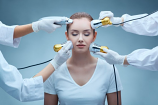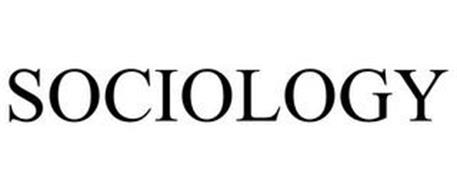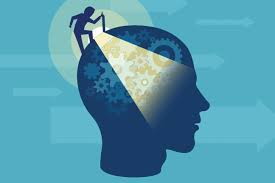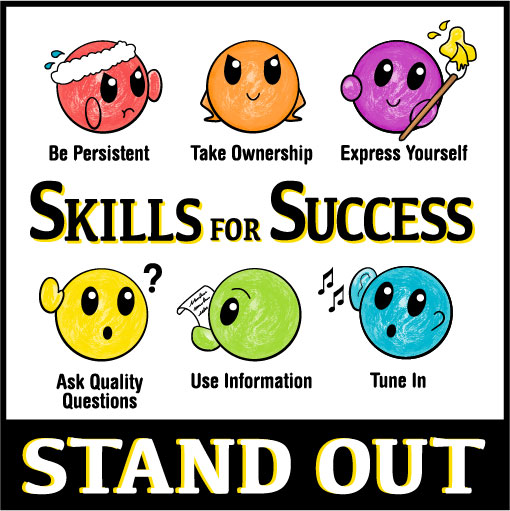
Student Excellence Certifications 2nd Year BPT

Description
Course content
Bachelor of Physiotherapy (BPT) 2nd Year
A ] EXERCISE THERAPY
Min. Hrs. : Theory - 80 Hrs., Practical - 60 Hrs.
1. Introduction to exercise therapy
2. Mechanical principle applied in human body
3. Disability models
4. Exercise physiology
5. Movements
6. Passive movements
7. Active movements
8. Starting positions
9. Relaxation
10. Suspension –
11. Balance
12. Neuromuscular coordination
13. Joint range measurement
14. Measurement of limb length, girth
15. Manual muscle testing
16. Mobility aids
17. Soft tissue manipulation (massage)
18. Joint mobilization:
19. Stretching:
20. Resisted exercise:
21. Proprioceptive Neuromuscular Facilitation
22. Aerobic Exercises
23. Hydrotherapy:
24. Balance training:
25. Posture:
26. Breathing Exercises:
27. Gait Training:
28. Soft Tissue Injury:
29. Yoga
PRACTICAL
1. Starting positions and derived positions
2. Range of motion (PROM, AROM, AAROM) exercises to all joints
3. Measurement of joint range using goniometer
4. General and local Relaxation techniques
5. Suspension exercise to all major joints
6. Massage – upper limb, lower limb, back, face
7. Manual muscle testing of individual muscles
8. Coordination exercises, balancing exercises
B ] ELECTRO THERAPY – I
Min. Hrs. : Theory - 80 Hrs., Practical - 60 Hrs.
THEORY
1. Basic components of electric current
2. Current electricity
3. Magnetism, theories of magnetism, properties of magnet.
4. Electromagnetic induction, electromagnetic radiation, laws governing radiations
5. Electrical components
6. Types of electric current, wave forms, current modulation
7. Safety issues while using electrical equipments
8. Muscle and nerve response to electrical stimulation
9. Pain – types of pain, pain pathway, theories of pain, Gate control theory of pain,
pain modulation at various levels.
10. Low frequency currents:
11. Electro diagnostic test
12. Interferential therapy (IFT
13. Introduction to high frequency current, Electro Magnetic Spectrum
14. SWD
15 Micro Wave Diathermy
16. Ultrasound
17. IRR
18 UVR
19. LASER
20 Wax Therapy
21. Contrast Bath
22. Moist Heat Therapy
23. Fluidotherapy
24. Cryotherapy
25. EMG and Nerve Conduction Velocity test, Biofeed back
PRACTICAL
1. Identify basic electrical components in electrotherapeutic equipments.
2. Reading of medical records, indentifying indications and contraindications for
electrotherapy.
3. Stimulation of motor points, stimulation of individual muscle and group muscle
4. Faradic foot bath, Faradism under pressure.
5. Plotting SD graph, diagnosis using electro diagnostic test – FG test and SD
curve.
6. Placement of electrodes in TENS & IFT with dosimeter for various indications.
C] MEDICAL MICROBIOLOGY
Min. Hrs. : Theory - 40 Hrs.,
THEORY
1. Introduction & History of Microbiology
2. Classification of microorganism
3. Bacteriology
4. Bacterial growth/Reproduction : Growth curve
5. Sterilization & disinfection :
6. Modes of transmission of diseases
7. Bacterial diseases (in brief):
8. Viral diseases (in brief)
9. Fungal diseases and opportunistic infections (in brief).
10. Food sanitation
11. Immunity
12. AIDS
13. Handling of infected material.
PRACTICAL
1. Preparation of smear.
2. Basic staining methods
3. Identification of bacteria on the basis of staining.
4. Basic knowledge of media and culture of bacteria.
5. Colony characteristics of common bacteria.
D] PATHOLOGY
Min. Hrs. : Theory - 40 Hrs.,
THEORY
1. Introduction to Pathology
2. Cell injuries:
3. Inflammation and Repair
4. Circulatory Distrurbances
5. Growth Disturbances and Neoplasia
6. Hematology
7. Respiratory System
8. Cardiovascular Pathology
- Congenital Heart diseases
PRACTICAL
Collection of blood and anticoagulants used..
Discussion about parts of microscope and different types of microscopes used in pathology.
Staining of slide by Leishman method.
Study of peripheral blood smear.
Estimation of hemaglobin by Sahli's method and discussion of other methods used. ESR
Identification of various instruments in pathology lab & their uses (eg. Neubar chamber, RBC, WBC, pipette etc.).
Bleeding Time, Clotting Time.
E] PHARMACOLOGY
Min. Hrs. : 40 Hrs.
General Pharmacology:
- Introduction, Definitions, Classification of drugs, Sources of drugs, Routes of
drug administration,
- Distribution of drugs, Metabolism and Excretion of drugs, Pharmacokinetics,
Pharmacodynamics,
- Factors modifying drug response.
- Elementry knowledge of drug toxicity, drug allergy, drug resistance, drug
potency, efficacy & drug antagonism. Autonomic Nervous system
- General considerations – The Sympathetic and Parasympathetic Systems, Receptors, Somatic Nervous System
- Cholinergic and Anti-Cholinergic drugs, Adrenergic and Adrenergic blocking drugs, Peripheral muscle relaxants.
Cardiovascular Pharmacology (in brief) :
- Drugs Used in the Treatment of Heart Failure: Digitalis, Diuretics, Vasodilators,
ACE inhibitors
- Antihypertensive Drugs: Diuretics, Beta Blockers, Calcium Channel Blockers,
ACE Inhibitors, Central Acting Alpha Agonists, Peripheral Alpha Antagonists,
Direct acting Vasodilators
- Antiarrhythmic Drugs
- Drugs Used in the Treatment of Vascular Disease and Tissue Ischemia:
Vascular Disease, Hemostasis Lipid-Lowering agents, Antithrombotics,
Anticoagulants and Thrombolytics
- Ischemic Heart Disease – Nitrates, Beta-Blockers, Calcium Channel Blockers
- Cerebral Ischemia
- Peripheral V ascular Disease
Neuropharmacology (in brief) :
- Sedative-Hypnotic Drugs: Barbiturates, Benzodiazepines
- Antianxiety Drugs: Benzodiazepines, Other Anxiolytics
- Drugs Used in Treatment of Mood Disorders: Monoamine Oxidase Inhibitors,
Tricyclic Antidepressants, Atypical Antidepressants, Lithium
- Antipsychotic drugs
4. Disorders of Movement (in brief) :
- Drugs used in Treatment of Parkinson’s Disease
- Antiepileptic Drugs
- Spasticity and Skeletal Muscle Relaxants
5. Inflammatory/Immune Diseases-
Non-narcotic Analgesics and Nonsteroidal Anti-Inflammatory Drugs: Acetaminophen, NSAIDs, Aspirin, Nonaspirin NSAIDs, drug Interactions with NSAIDs
Glucocorticoids: Pharmacological Uses of Glucocorticoids, adverse effects, Physiologic Use of Glucocorticoids
Drugs Used in Treatment of Arthritic Diseases: Rheumatoid Arthritis, Osteoarthritis, Gout
Drugs Used in the Treatment of Neuromuscular Immune/Inflammatory Diseases: Myasthenia gravis, Idiopathic Inflammatory Myopathies, systemic lupus Erythmatosus, Scleroderma, Demyelinating Disease
Respiratory Pharmacology (in brief) : Obstructive Airway Diseases, Drugs used in Treatment of Obstructive airway Diseases, Allergic Rhinitis
Digestion and Metabolism (in brief):
Gastrointestinal Pharmacology: Peptic Ulcer Disease, Constipation, Diarrhea
Drugs Used in Treatment of Diabetes Mellitus: Insulin, Oral Hypoglycemics Geriatrics:
Pharmacology and the geriatric Population: Adverse effects of special concern in the Elderly, Dementia, Postural hypotension, urinary incontinence.
F] GENERAL MEDICINE INCLUDING PEDIATRICS & PSYCHIATRY
Min. Hrs. : 80 Hrs.
1. Introduction:
2. Infectious Diseases:
3. Nutritional & Metabolic Diseases:
4. Alimentary tract
5. Brief description of liver diseases
6. Diseases of connective tissues
7. Diseases of skin
8. Geriatrics-
9. First Aid in common Medical Emergencies
10. Cardio-vascular System
11. Respiratory System diseases
12. Neurology complications
13. Developmental and degenerative syndromes –
14. Disorders of Spinal cord and Cauda Equina-
15. Peripheral nerve disorders –
16. Muscle disorders
G ] PEDIATRICS
1. Normal Growth and development of child : Motor, mental, language and social
2. Common infectious diseases in children:
3. Immunization programmes:
4. Child and nutrition :
5. Clinical presentation, management & prevention of the following : Cerebral palsy, Poliomyelitis, Muscular dystrophy
6. Childhood rheumatism
7. Acute CNS infections:
8. Clinical presentation, management & prevention of the following respiratory conditions: URI, LRI, bronchiolitis, asthma, TB
9. Clinical presentation, management & prevention of the following cardiac conditions: Rheumatic heart disease, SABE, Congenital heart disease - ASD, VSD, PDA
H ] PSYCHIATRY
1. Modalities of psychiatric treatment
2. Psychiatric illness and physical therapy link
3. Brief description of Etio-pathogenesis, manifestations, and management of
psychiatric illnesses -
a. Anxiety neurosis
b. Depression
c. Obsessive compulsive neurosis
d. Psychosis- Définition & types
e. Maniac-depressive psychosis
f. Post-traumatic stress disorder
g. Psychosomatic reactions: Stress and Health, theories of Stress – Illness Link
4. Brief description of Etio-pathogenesis, manifestations, and management of psychiatric illness
a. Drug dependence and alcoholism
b. Somatoform and Dissociate Disorders – conversion reactions, Somatization,
Dissociate Amnesia, and Dissociate Fugue
c. Personality disorders
5. Child psychiatry:
6. Geriatric Psychiatry (in brief)
I] GENERAL SURGERY
Min. Hrs. : 60 Hrs.
1. Fluid, Electrolyte and Acid-Base disturbances
2. Transfusion therapy in surgery
3. Wounds :
4. Pre & postoperative complications of surgery and their management.
5. Hemostasis
6. Types of anaesthesia and its affects on the patient, pain relief.
7. Types of Incisons
8. Burn
9. Skin Grafts :
10. Infections and injuries of Hand
11. Surgical Oncology – Cancer
12. Disorders of muslces, tendons and ligaments, sports related injuries.
13. Neurological disorder affecting to musclo-skeletal system. \
14. The cranium :
15. Thoracic and cardiac surgery
16. Various surgical heart diseases with respect to clinical presentation, complications
and management
17. Diseases of the Arteries and Veins :
18. Definition, Indication, Incision, Physiological changes and Complications following Common operations like Cholecystectomy, Colostomy, Ileostomy, Gastrectomy, Hernias, Appendicectomy Mastectomy, Nephrectomy, Prostectomy.
19. Obstetrics & Gynecology
20. ENT:
21. Ophthalmology:
Teaching, structure and assessment
This course runs through one year and is delivered through a combination of Online,face-to-face lectures, workshops and seminars. There’ll also be online learning tests which you’ll need to complete.
Learning Outcomes:
Student Excellence Certification Course BPT-2ND YEAR.
On successful completion of the course students will be able to:
Demonstrate sufficient understanding of knowledge in Physiotherapy.
· Able to integrate theoretical knowledge with clinical assessment.
· Develop the ability to collect history, perform relevant clinical assessment and frame
appropriate electrotherapeutic and exercise therapy management for the patients.
· Demonstrate clinical decision making ability and provide appropriate patient care.
· Develop effective communication with patients, family, colleagues and students
Bachelor of Physiotherapy (BPT) 2nd Year
A ] EXERCISE THERAPY
Min. Hrs. : Theory - 80 Hrs., Practical - 60 Hrs.
1. Introduction to exercise therapy
2. Mechanical principle applied in human body
3. Disability models
4. Exercise physiology
5. Movements
6. Passive movements
7. Active movements
8. Starting positions
9. Relaxation
10. Suspension –
11. Balance
12. Neuromuscular coordination
13. Joint range measurement
14. Measurement of limb length, girth
15. Manual muscle testing
16. Mobility aids
17. Soft tissue manipulation (massage)
18. Joint mobilization:
19. Stretching:
20. Resisted exercise:
21. Proprioceptive Neuromuscular Facilitation
22. Aerobic Exercises
23. Hydrotherapy:
24. Balance training:
25. Posture:
26. Breathing Exercises:
27. Gait Training:
28. Soft Tissue Injury:
29. Yoga
PRACTICAL
1. Starting positions and derived positions
2. Range of motion (PROM, AROM, AAROM) exercises to all joints
3. Measurement of joint range using goniometer
4. General and local Relaxation techniques
5. Suspension exercise to all major joints
6. Massage – upper limb, lower limb, back, face
7. Manual muscle testing of individual muscles
8. Coordination exercises, balancing exercises
B ] ELECTRO THERAPY – I
Min. Hrs. : Theory - 80 Hrs., Practical - 60 Hrs.
THEORY
1. Basic components of electric current
2. Current electricity
3. Magnetism, theories of magnetism, properties of magnet.
4. Electromagnetic induction, electromagnetic radiation, laws governing radiations
5. Electrical components
6. Types of electric current, wave forms, current modulation
7. Safety issues while using electrical equipments
8. Muscle and nerve response to electrical stimulation
9. Pain – types of pain, pain pathway, theories of pain, Gate control theory of pain,
pain modulation at various levels.
10. Low frequency currents:
11. Electro diagnostic test
12. Interferential therapy (IFT
13. Introduction to high frequency current, Electro Magnetic Spectrum
14. SWD
15 Micro Wave Diathermy
16. Ultrasound
17. IRR
18 UVR
19. LASER
20 Wax Therapy
21. Contrast Bath
22. Moist Heat Therapy
23. Fluidotherapy
24. Cryotherapy
25. EMG and Nerve Conduction Velocity test, Biofeed back
PRACTICAL
1. Identify basic electrical components in electrotherapeutic equipments.
2. Reading of medical records, indentifying indications and contraindications for
electrotherapy.
3. Stimulation of motor points, stimulation of individual muscle and group muscle
4. Faradic foot bath, Faradism under pressure.
5. Plotting SD graph, diagnosis using electro diagnostic test – FG test and SD
curve.
6. Placement of electrodes in TENS & IFT with dosimeter for various indications.
C] MEDICAL MICROBIOLOGY
Min. Hrs. : Theory - 40 Hrs.,
THEORY
1. Introduction & History of Microbiology
2. Classification of microorganism
3. Bacteriology
4. Bacterial growth/Reproduction : Growth curve
5. Sterilization & disinfection :
6. Modes of transmission of diseases
7. Bacterial diseases (in brief):
8. Viral diseases (in brief)
9. Fungal diseases and opportunistic infections (in brief).
10. Food sanitation
11. Immunity
12. AIDS
13. Handling of infected material.
PRACTICAL
1. Preparation of smear.
2. Basic staining methods
3. Identification of bacteria on the basis of staining.
4. Basic knowledge of media and culture of bacteria.
5. Colony characteristics of common bacteria.
D] PATHOLOGY
Min. Hrs. : Theory - 40 Hrs.,
THEORY
1. Introduction to Pathology
2. Cell injuries:
3. Inflammation and Repair
4. Circulatory Distrurbances
5. Growth Disturbances and Neoplasia
6. Hematology
7. Respiratory System
8. Cardiovascular Pathology
- Congenital Heart diseases
PRACTICAL
Collection of blood and anticoagulants used..
Discussion about parts of microscope and different types of microscopes used in pathology.
Staining of slide by Leishman method.
Study of peripheral blood smear.
Estimation of hemaglobin by Sahli's method and discussion of other methods used. ESR
Identification of various instruments in pathology lab & their uses (eg. Neubar chamber, RBC, WBC, pipette etc.).
Bleeding Time, Clotting Time.
E] PHARMACOLOGY
Min. Hrs. : 40 Hrs.
General Pharmacology:
- Introduction, Definitions, Classification of drugs, Sources of drugs, Routes of
drug administration,
- Distribution of drugs, Metabolism and Excretion of drugs, Pharmacokinetics,
Pharmacodynamics,
- Factors modifying drug response.
- Elementry knowledge of drug toxicity, drug allergy, drug resistance, drug
potency, efficacy & drug antagonism. Autonomic Nervous system
- General considerations – The Sympathetic and Parasympathetic Systems, Receptors, Somatic Nervous System
- Cholinergic and Anti-Cholinergic drugs, Adrenergic and Adrenergic blocking drugs, Peripheral muscle relaxants.
Cardiovascular Pharmacology (in brief) :
- Drugs Used in the Treatment of Heart Failure: Digitalis, Diuretics, Vasodilators,
ACE inhibitors
- Antihypertensive Drugs: Diuretics, Beta Blockers, Calcium Channel Blockers,
ACE Inhibitors, Central Acting Alpha Agonists, Peripheral Alpha Antagonists,
Direct acting Vasodilators
- Antiarrhythmic Drugs
- Drugs Used in the Treatment of Vascular Disease and Tissue Ischemia:
Vascular Disease, Hemostasis Lipid-Lowering agents, Antithrombotics,
Anticoagulants and Thrombolytics
- Ischemic Heart Disease – Nitrates, Beta-Blockers, Calcium Channel Blockers
- Cerebral Ischemia
- Peripheral V ascular Disease
Neuropharmacology (in brief) :
- Sedative-Hypnotic Drugs: Barbiturates, Benzodiazepines
- Antianxiety Drugs: Benzodiazepines, Other Anxiolytics
- Drugs Used in Treatment of Mood Disorders: Monoamine Oxidase Inhibitors,
Tricyclic Antidepressants, Atypical Antidepressants, Lithium
- Antipsychotic drugs
4. Disorders of Movement (in brief) :
- Drugs used in Treatment of Parkinson’s Disease
- Antiepileptic Drugs
- Spasticity and Skeletal Muscle Relaxants
5. Inflammatory/Immune Diseases-
Non-narcotic Analgesics and Nonsteroidal Anti-Inflammatory Drugs: Acetaminophen, NSAIDs, Aspirin, Nonaspirin NSAIDs, drug Interactions with NSAIDs
Glucocorticoids: Pharmacological Uses of Glucocorticoids, adverse effects, Physiologic Use of Glucocorticoids
Drugs Used in Treatment of Arthritic Diseases: Rheumatoid Arthritis, Osteoarthritis, Gout
Drugs Used in the Treatment of Neuromuscular Immune/Inflammatory Diseases: Myasthenia gravis, Idiopathic Inflammatory Myopathies, systemic lupus Erythmatosus, Scleroderma, Demyelinating Disease
Respiratory Pharmacology (in brief) : Obstructive Airway Diseases, Drugs used in Treatment of Obstructive airway Diseases, Allergic Rhinitis
Digestion and Metabolism (in brief):
Gastrointestinal Pharmacology: Peptic Ulcer Disease, Constipation, Diarrhea
Drugs Used in Treatment of Diabetes Mellitus: Insulin, Oral Hypoglycemics Geriatrics:
Pharmacology and the geriatric Population: Adverse effects of special concern in the Elderly, Dementia, Postural hypotension, urinary incontinence.
F] GENERAL MEDICINE INCLUDING PEDIATRICS & PSYCHIATRY
Min. Hrs. : 80 Hrs.
1. Introduction:
2. Infectious Diseases:
3. Nutritional & Metabolic Diseases:
4. Alimentary tract
5. Brief description of liver diseases
6. Diseases of connective tissues
7. Diseases of skin
8. Geriatrics-
9. First Aid in common Medical Emergencies
10. Cardio-vascular System
11. Respiratory System diseases
12. Neurology complications
13. Developmental and degenerative syndromes –
14. Disorders of Spinal cord and Cauda Equina-
15. Peripheral nerve disorders –
16. Muscle disorders
G ] PEDIATRICS
1. Normal Growth and development of child : Motor, mental, language and social
2. Common infectious diseases in children:
3. Immunization programmes:
4. Child and nutrition :
5. Clinical presentation, management & prevention of the following : Cerebral palsy, Poliomyelitis, Muscular dystrophy
6. Childhood rheumatism
7. Acute CNS infections:
8. Clinical presentation, management & prevention of the following respiratory conditions: URI, LRI, bronchiolitis, asthma, TB
9. Clinical presentation, management & prevention of the following cardiac conditions: Rheumatic heart disease, SABE, Congenital heart disease - ASD, VSD, PDA
H ] PSYCHIATRY
1. Modalities of psychiatric treatment
2. Psychiatric illness and physical therapy link
3. Brief description of Etio-pathogenesis, manifestations, and management of
psychiatric illnesses -
a. Anxiety neurosis
b. Depression
c. Obsessive compulsive neurosis
d. Psychosis- Définition & types
e. Maniac-depressive psychosis
f. Post-traumatic stress disorder
g. Psychosomatic reactions: Stress and Health, theories of Stress – Illness Link
4. Brief description of Etio-pathogenesis, manifestations, and management of psychiatric illness
a. Drug dependence and alcoholism
b. Somatoform and Dissociate Disorders – conversion reactions, Somatization,
Dissociate Amnesia, and Dissociate Fugue
c. Personality disorders
5. Child psychiatry:
6. Geriatric Psychiatry (in brief)
I] GENERAL SURGERY
Min. Hrs. : 60 Hrs.
1. Fluid, Electrolyte and Acid-Base disturbances
2. Transfusion therapy in surgery
3. Wounds :
4. Pre & postoperative complications of surgery and their management.
5. Hemostasis
6. Types of anaesthesia and its affects on the patient, pain relief.
7. Types of Incisons
8. Burn
9. Skin Grafts :
10. Infections and injuries of Hand
11. Surgical Oncology – Cancer
12. Disorders of muslces, tendons and ligaments, sports related injuries.
13. Neurological disorder affecting to musclo-skeletal system. \
14. The cranium :
15. Thoracic and cardiac surgery
16. Various surgical heart diseases with respect to clinical presentation, complications
and management
17. Diseases of the Arteries and Veins :
18. Definition, Indication, Incision, Physiological changes and Complications following Common operations like Cholecystectomy, Colostomy, Ileostomy, Gastrectomy, Hernias, Appendicectomy Mastectomy, Nephrectomy, Prostectomy.
19. Obstetrics & Gynecology
20. ENT:
21. Ophthalmology:
Teaching, structure and assessment
This course runs through one year and is delivered through a combination of Online,face-to-face lectures, workshops and seminars. There’ll also be online learning tests which you’ll need to complete.
Learning Outcomes:
Student Excellence Certification Course BPT-2ND YEAR.
On successful completion of the course students will be able to:
Demonstrate sufficient understanding of knowledge in Physiotherapy.
· Able to integrate theoretical knowledge with clinical assessment.
· Develop the ability to collect history, perform relevant clinical assessment and frame
appropriate electrotherapeutic and exercise therapy management for the patients.
· Demonstrate clinical decision making ability and provide appropriate patient care.
· Develop effective communication with patients, family, colleagues and students
Product rating
Customer Reviews
There have been no reviews for this product.
Add your review here


![Wheel chair [manual light weight ] Wheel chair [manual light weight ]](http://www.ccdr.co.in/images/T/motor-wheelchair-150.jpg)
![Myo-electric hand [B.E] External Power/Myo-electric Myo-electric hand [B.E] External Power/Myo-electric](http://www.ccdr.co.in/images/T/myoelectric-hand-150.jpg)
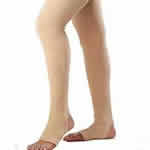
![6 DAYS COURSE ON CERTIFICATE IN ORTHOPAEDIC MANUAL THERAPY [COMT] - HYDERABAD 6 DAYS COURSE ON CERTIFICATE IN ORTHOPAEDIC MANUAL THERAPY [COMT] - HYDERABAD](http://www.ccdr.co.in/images/T/manual%20therapy%20side-04.jpg)
